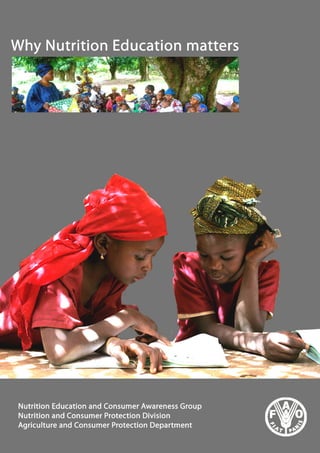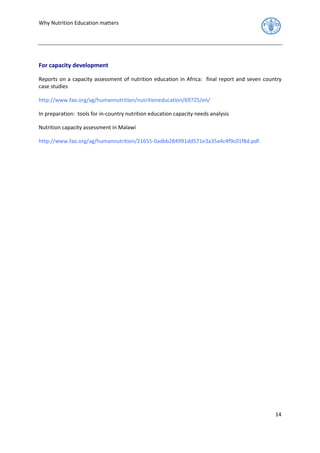The document emphasizes the importance of nutrition education in addressing global challenges of malnutrition, highlighting the coexistence of undernutrition and diet-related diseases. It argues that merely increasing food production is insufficient for improving nutritional status and stresses the need for individuals to learn about healthy eating choices. FAO's role is pivotal in promoting nutrition education as a sustainable strategy to improve health and wellbeing across populations.













